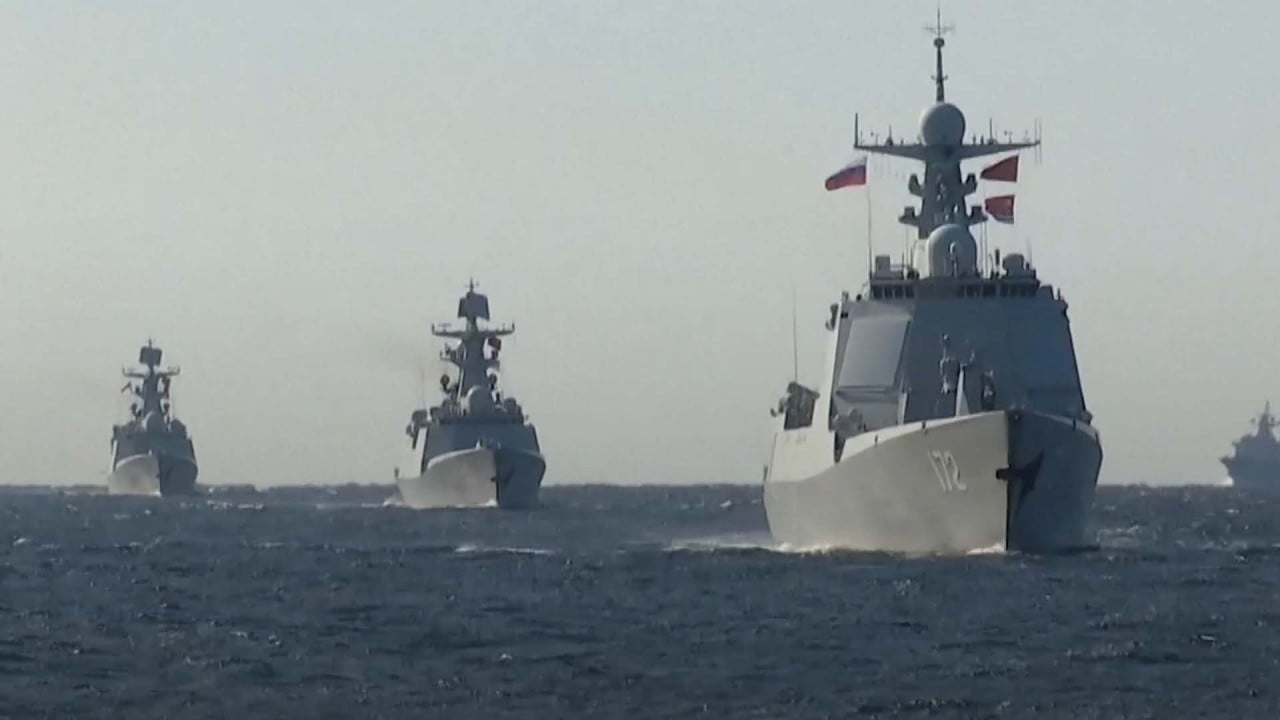
China, Russia send warships past Japan as they extend show of cooperation
- Ten warships sail through Tsugaru Strait, between Honshu and Hokkaido islands – seen by observers as a warning to Japan
- It follows anti-submarine drill that is described as a mark of mutual trust
Only 19km (12 miles) wide at its narrowest point, it has a narrow passage of international waters through the middle after Japan opted in the Cold War era to limit its territorial waters to three nautical miles instead of the 12 it is entitled to claim.

01:56
Chinese, Russian warships sail through Japan strait for first time
That has allowed nuclear-armed US warships and submarines to transit the area without breaking Japan’s commitment not to develop or use atomic weapons, nor permit nuclear arms to enter its territory.
Monday’s passage came the day after China and Russia wrapped up their annual exercises near the Peter the Great Gulf in the Sea of Japan, during which the two navies carried out training to improve combat capability to “deal with the security threat at sea and safeguard regional peace and stability”, Zhang Junshe, a researcher at the People’s Liberation Army’s naval research institute, told PLA Daily.
Observers agreed that the latest joint drills were consistent with Beijing and Moscow moving closer and deepening strategic trust in opposition to the US and its allies.
According to Chinese state media, Beijing for the first time sent its new Type 055 guided-missile destroyer Nanchang for the joint drills. Commissioned last year, it is among the largest warships in East Asia and serves as an escort for China’s aircraft carriers.

01:29
China and Russia conduct joint naval drills in Sea of Japan
Anti-submarine warfare training was among the top priorities in the four days of drills, which former PLA instructor Song Zhongping said had shown high-level trust between the two militaries.
“Anti-submarine warfare training is a difficult and sensitive subject that involves information exchange,” Song said. “Strengthening cooperation on that means mutual security trust has reached a very high level.”
What is the Quad, and how will it impact US-China relations under Biden?
As part of what Beijing classes as a comprehensive strategic partnership of coordination – its highest degree of diplomatic recognition – China and Russia have cooperated regularly in military drills since 2012, excluding last year because of the Covid-19 pandemic. Since 2019, the two countries have conducted annual joint strategic air patrols over the East China Sea and the Sea of Japan.
The Chinese and Russian governments have said that their security cooperation is not targeting any third country, but observers agreed that Monday’s joint patrol through Tsugaru Strait could be a message to the US and its allies – particularly Japan, a key ally that hosts some of the most important US military bases in the region.
Neither Beijing nor Moscow approves of Tokyo’s widening range of security partnerships, which are designed to supplement the alliance with the US, according to James Brown, an associate professor at Temple University Japan Campus. Japan is part of the Quad, a four-way security partnership with Australia, the US and India that Beijing sees as part of Washington’s containment strategy against China.
Last month, Japan hosted the HMS Queen Elizabeth aircraft carrier before it sailed through the Taiwan Strait.
“It is a clear show of force directed towards Japan,” Brown said. “This joint transit is China’s and Russia’s way of telling Tokyo that, if Japan takes such actions, it should expect consequences.”
Although Beijing and Moscow have steadily increased military cooperation to display their mutual trust, Brown said it remained below the level of alliance between Japan and the US.
“Still, with every year that passes and with cooperation now conducted between their naval, land and air forces, China-Russia military cooperation is a major worry for Japan,” he said.

